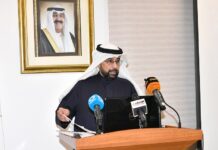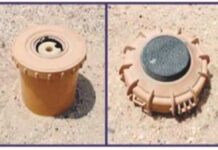The last time Kuwait revamped its fighter-fleet was in early 1992, following the country’s liberation from the seven-month Iraqi occupation that had left the country’s air defense in tatters. More than a quarter-century of relying on the same hardware in an industry such as defense, known for rapid technological advances, has meant Kuwait is far behind other countries in the region with regard to its air defenses.
The Kuwait Air Force (KAF) continues to rely on its aging fleet of 31 single-seat F/A-18C Hornets and the 8 dual-seat F/A-18D Hornets that began service in 1992, to support the country’s strategic and tactical air maneuvers. Incidentally, even though the Hornets have been modernized in recent years to keep them relevant, these aircraft are among the oldest legacy Hornets flying anywhere. The government’s decision to modernize the air force and acquire 56 new fighter jets — equally divided between the European Eurofighter Typhoons and the United States’ Boeing F/A-18E/F Super Hornets — was never too soon for the air force.
In April 2016, Italian defense manufacturer Leonardo (then Finmeccanica) signed a deal with the KAF, worth nearly US$9 billion, for 28 Eurofighters. The contract includes 22 single-seater and 6 twin-seater tranche 3s aircraft, that will be optimized to the latest technological standards. They will also be the first to be equipped with the Leonardo Air and Space Systems Captor-E air radar, known as Captor-E. Deliveries of the fully equipped aircraft are expected to take place between 2020 and 2023.
Kuwait is also understood to have purchased the Raytheon AIM-120C7 advanced medium-range air-to-air missiles (AMRAAMs), and 14 Lockheed Martin Sniper ATP targeting pods, following approval from the US Congress for the sale in January 2017. Lockheed Martin was awarded a direct commercial sale (DCS) contract in September 2016 to provide KAF with 18 Sniper advanced targeting pods (ATPs), as well as logistics support. The Sniper ATP detects, identifies, automatically tracks and laser-designates small tactical targets at long ranges. It also supports employment of all laser- and GPS-guided weapons against multiple fixed and moving targets.
Both these cutting-edge weapons will be initially used in the existing Hornets before being transferred to the Typhoons and Super Hornet. Armed with these latest planes and armaments the KAF is expected to have an impressive capability to match that of its regional partners in both defense and attack situations.
The lack of training aircraft is another obstacle that has challenged the KAF since the Hawk Mk64 and Tucano Mk52 training craft were grounded several years ago. For the moment, the country’s pilots are trained overseas, but this is not a long-term solution and the KAF is aware that it needs its own training aircraft. Leonardo is offering its T-345 turbofan trainer and T-346 transonic trainer, while Boeing is already promoting its new T-X jet trainer, which was recently selected by the US Air Force (USAF).
Eight Kuwait Air Force instructor pilots are thought to have joined the Italian Air Force’s Typhoon operational conversion unit (4 Stormo) at Grosseto to learn to fly the Typhoon before heading back to Kuwait to instruct new pilots. Meanwhile, Boeing instructors are currently embedded with the KAF’s F/A-18C/D operational conversion unit, 61 Squadron, which is carrying out the initial flying training on the classic Hornets at Ahmed Al Jaber Air Base. It is likely a similar arrangement will continue when the new Super Hornets arrive at Ali Al Salem, and the same, too, with a Eurofighter operational conversion unit being set up.
– The Times Report

















